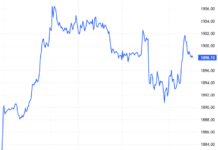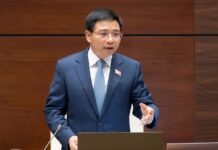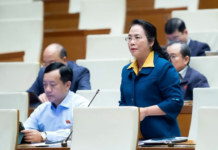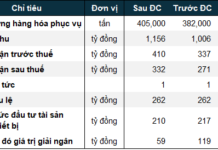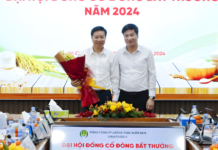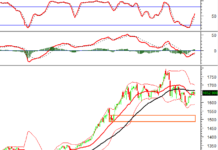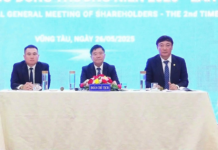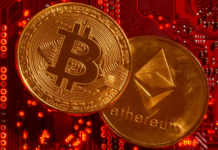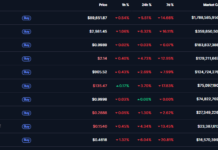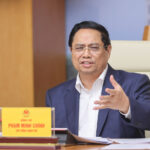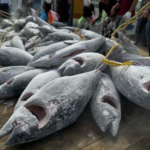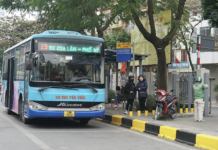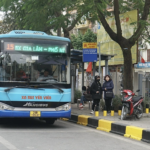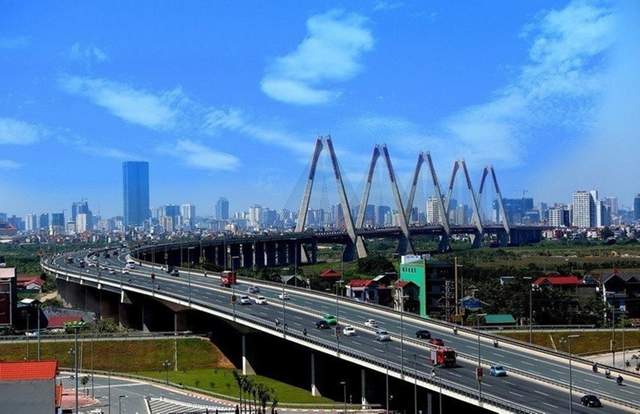
|
Local-managed investment capital is the brightest spot, estimated at 324.1 trillion VND, equivalent to 41.1% of the annual plan and a sharp increase of 29.4% over the same period last year. (Photo: Vietnam+)
|
Throughout 80 years of nation-building and development, the finance-banking sector has always played a crucial role as the main capital conduit, contributing to macroeconomic stability, promoting production and business, and accompanying people and enterprises through many challenging periods.
From the early difficult days to the period of deep integration, banks have been the lifeblood nourishing the economy, creating momentum for sustainable growth.
Based on this solid foundation, Vietnam is entering a new stage of development, with the goal of establishing an international financial center. Recent decisions by the Government and the Prime Minister demonstrate a strong determination to create a modern, transparent, attractive, and deeply integrated financial ecosystem with the world.
Aspiring to position Vietnam on the global financial map
Developing an international financial center is not just a resource mobilization strategy but also an important step in positioning Vietnam in the global financial value chain.
With the National Assembly’s Resolution 222/2025/QH15 on International Financial Centers in Vietnam and the Action Plan recently issued by the Government, Vietnam has officially entered the stage of realizing the vision of building international financial centers in Ho Chi Minh City and Danang.
A National Steering Committee, headed by Prime Minister Pham Minh Chinh, has been established, aiming to have these centers operational by the end of 2025.
According to Assoc. Prof. Dr. Nguyen Thuong Lang, a senior lecturer at the National Economics University, the emergence of the International Financial Center signals the maturity of Vietnam’s financial system, reflecting the resilience of the economy and the confidence of the banking system, as well as the forces involved in researching, managing, and developing this system. More importantly, it is an opportunity to reduce capital pressure on the banking system and open up a new channel for international capital mobilization.
Assoc. Prof. Dr. Pham Thi Hoang Anh, Deputy Director in charge of the Board of Directors of the Banking Academy, also emphasized that the International Financial Center will attract many of the world’s largest banks, leading investment funds, and financial companies. “With this scale, capital will flow more flexibly between domestic regions and between Vietnam and the world, promoting trade, investment, and sustainable development,” said Ms. Hoang Anh.
In the ecosystem of the International Financial Center, the banking industry plays the role of both institutional architect and operator.
According to Assoc. Prof. Dr. Pham Thi Hoang Anh, when establishing the International Financial Center, the State Bank will be the pillar that establishes a stable legal framework for the operation of the International Financial Center, including regulations on currency, foreign exchange, payment, and ensuring the safety of the banking system in the context of deep integration into the international capital market.
From another perspective, Assoc. Prof. Dr. Nguyen Thuong Lang believes that banks must be the “pioneering agents,” leading the financial system to international integration with depth and high efficiency; taking advantage of global financial technology advances and applying them to new conditions, thereby building a modern financial system.
To effectively attract international financial institutions to the International Financial Center, Assoc. Prof. Dr. Nguyen Thuong Lang suggested that a prerequisite is that Vietnam’s legal system needs to be clear, concise, attractive, and in line with international practices, with a forward-looking nature.
In addition, high transparency, adherence to market principles, and compliance with international credit standards are necessary. Qualified human resources capable of operating and developing the market are also essential.

|
In July alone, total state budget revenue was estimated at 242.1 trillion VND. (Photo: Vietnam+)
|
Looking back on the 80-year journey, the banking industry now meets 60-70% of the economy’s capital needs, especially in priority areas such as agriculture and high technology, thereby promoting growth and ensuring sustainable development.
In the past time, the credit of the whole system has grown positively. The latest update from the State Bank of Vietnam shows that credit of the whole system increased by about 10% compared to the end of 2024. The lending interest rate continues to decrease, creating favorable conditions for production and business.
This result is thanks to the efforts of both the State Bank of Vietnam and commercial banks, creating favorable conditions for businesses and people to expand production and business.
Mr. Le Ngoc Lam, General Director of the Bank for Investment and Development of Vietnam (BIDV), said that in the past seven months, BIDV has reduced income by about 3,000 billion VND to lower lending interest rates, helping businesses and people reduce capital costs.
Similarly, at Tien Phong Commercial Joint Stock Bank (TPBank), Deputy General Director Nguyen Viet Anh shared that the bank has diversified capital sources, increased the mobilization of non-term capital (CASA), and other mobilized capital sources, including foreign capital, to strengthen its capital base and thus gradually lower the interest rate on deposits. This is also an important condition to help reduce lending interest rates for businesses and people.
From the management agency, Deputy Governor of the State Bank of Vietnam Pham Thanh Ha emphasized that in the coming time, monetary policy will continue to aim at macroeconomic stability, inflation control, and credit efficiency improvement. The State Bank requires credit institutions to seriously stabilize deposit interest rates and strive to reduce lending interest rates to contribute to economic recovery and development.
Vietnam’s finance-banking sector has proven its mettle through the most challenging periods, from the global financial crisis to the pandemic and economic fluctuations.
With the determination of the Government, the companionship of the banking system, and efforts to improve the business environment, the goal of building an international financial center in Vietnam is not just a distant vision but is gradually becoming a reality – opening up a new stage of deep and sustainable development for the Vietnamese economy.
Le Phuong
– 14:26 17/08/2025
Unlocking the Potential: Minister of Science and Technology, Going Beyond Tech Indexes to Tackle Core Tech and Market Conundrums
In the context of the integration of the science and technology sector with the information and communications field, the Prime Minister requested that the Ministry shift its focus from building targets to creating a technology market, forming innovative enterprises, and mastering 70% of domestic strategic technology.
Danang Seeks Thaco Investment for a Billion-Dollar Metro Project: A 100km Super-Line to Connect with Hoi An in Just 20 Minutes
“The vibrant city of Da Nang seeks investment from the renowned THACO, owned by billionaire Tran Ba Duong, for an ambitious urban railway project. This proposed venture aims to forge a strategic connection between the enchanting town of Hoi An and the thriving Chu Lai area. With THACO’s involvement, this project has the potential to revolutionize transportation and connectivity in the region.”





